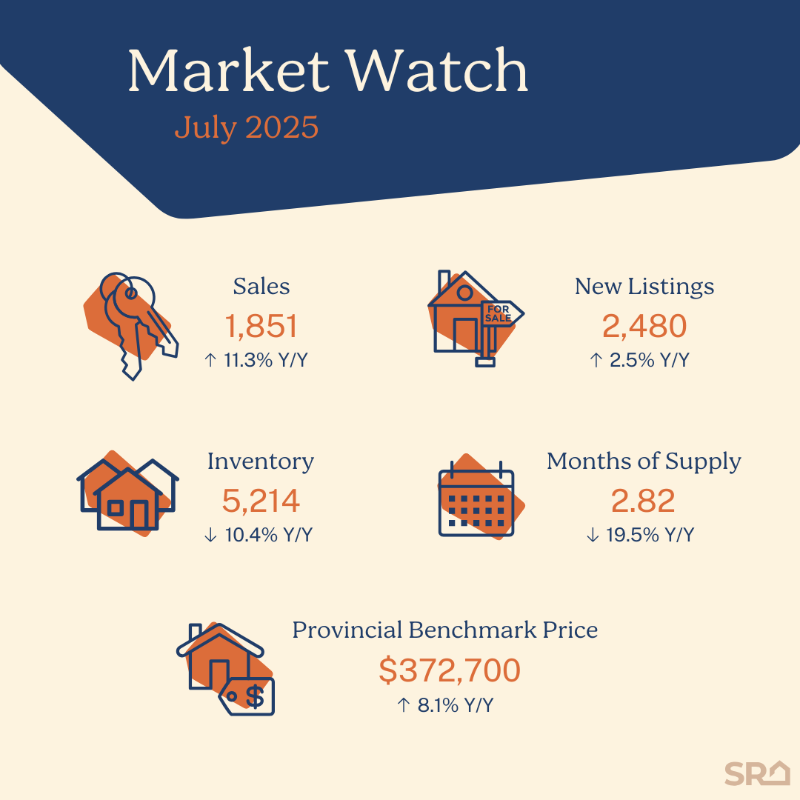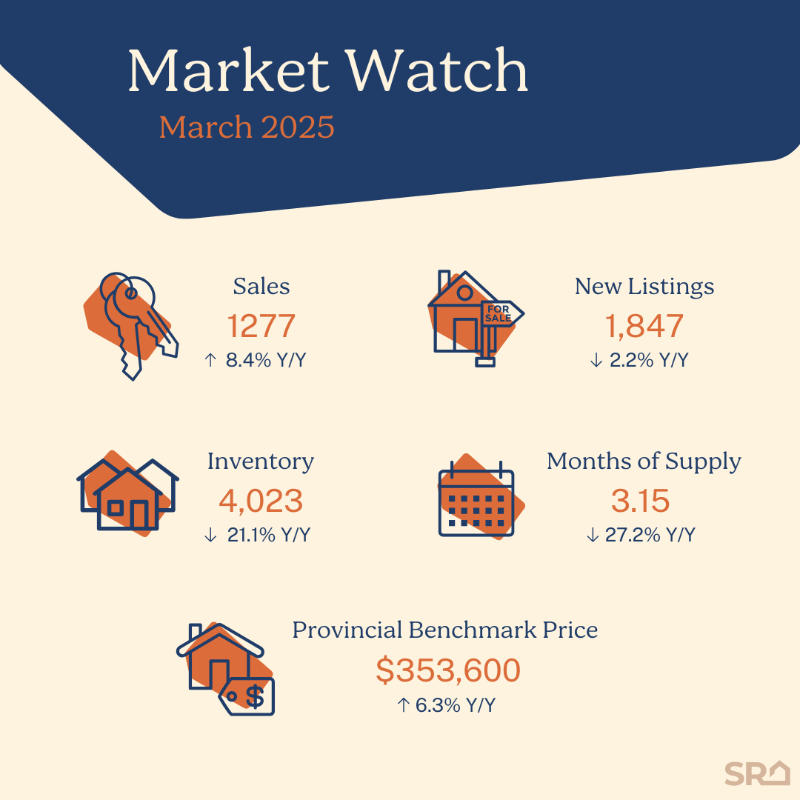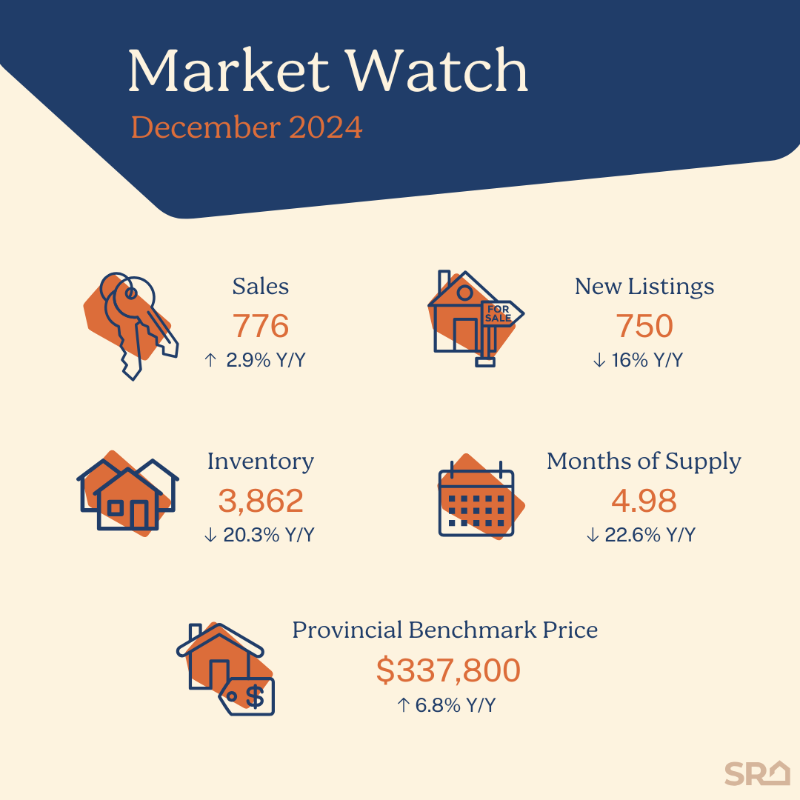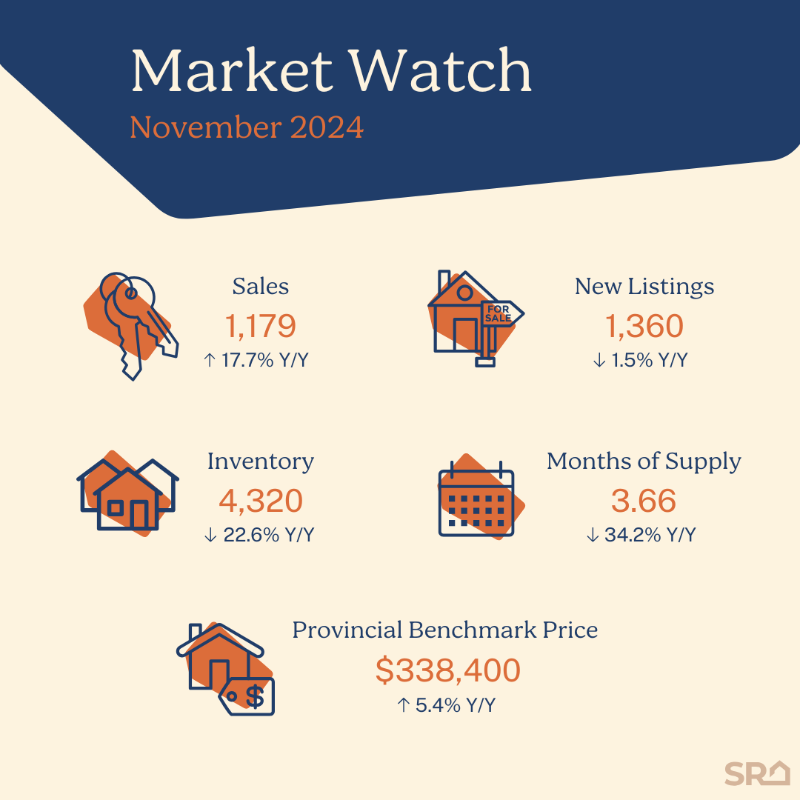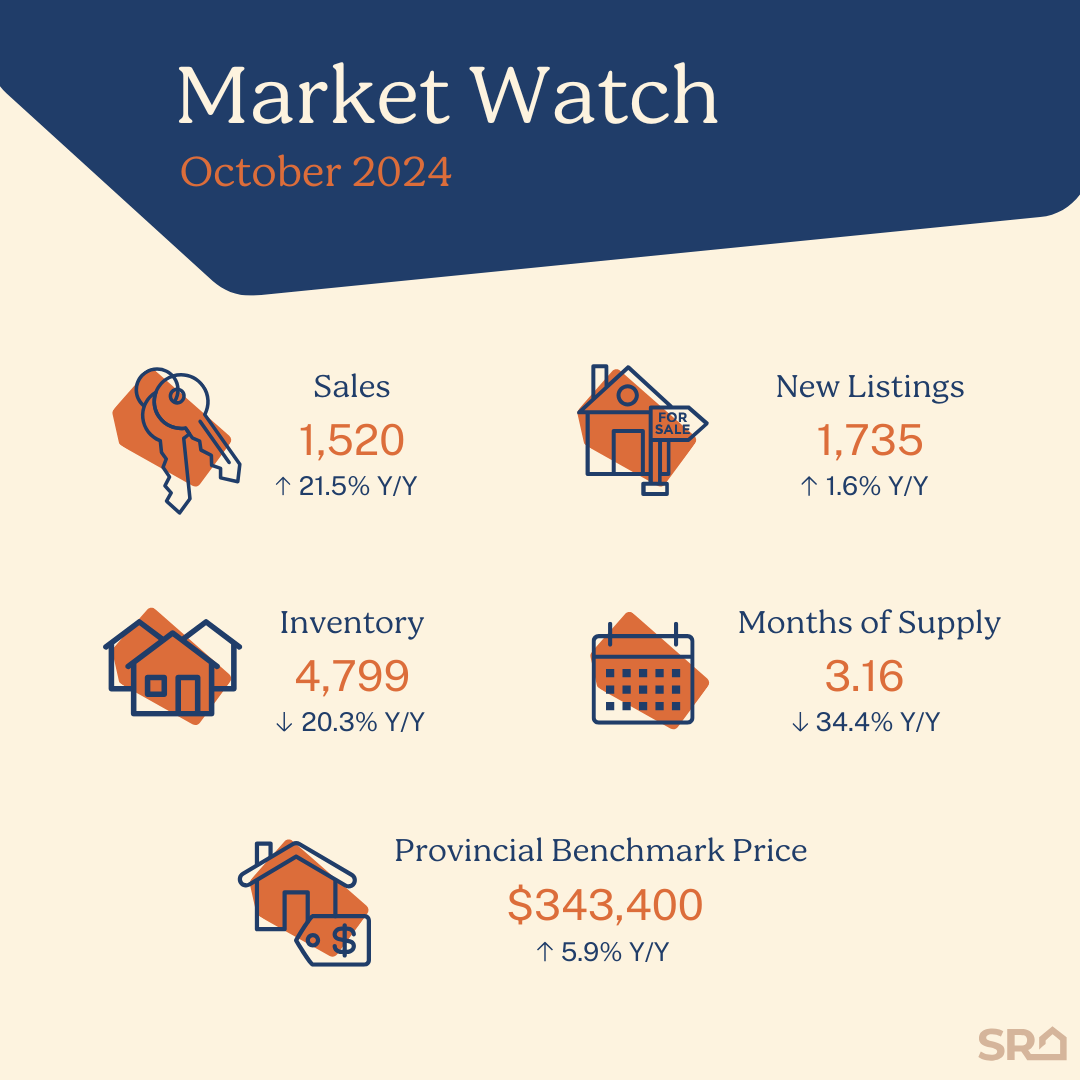Saskatchewan’s housing market continued its hot streak last month, with a July record 1,851 sales across the province — up 11 percent year-over-year and over 30 percent above long-term, 10-year trends.
Following record July monthly sales, year-to-date sales have outpaced 2024 levels through the first seven months of 2025. Of note, 2024 was the province's second-best year for sales on record, underscoring the strength of the current market.
Despite a year-over-year gain in new listings, record monthly sales resulted in province-wide inventory remaining unchanged from June. With over 1,000 of the 5,214 units available at the end of July already conditionally sold, only 4,174 active units remain heading into August.
“Saskatchewan’s housing market continues to benefit from a strong and growing economy, record population growth, and the lowest unemployment rate in the country,” said Association CEO, Chris Guérette. “Our market is consistently surpassing expectations and outpacing many others across the nation, with a strong start to 2025 and now record-breaking monthly sales in July.”
Twenty-five consecutive months of above-average sales, paired with persistent supply challenges, continue to drive prices higher across the province. In July, the provincial residential benchmark price hit an all-time high of $372,700, up from $370,700 in June and over eight percent higher than in July 2024.
In addition to a new record provincial benchmark price, the cities of Humboldt, Meadow Lake, Melville, Regina, Saskatoon, Swift Current, and Yorkton recorded record benchmark prices in July.
“We’ve now seen record prices across dozens of communities for three consecutive months – with year-over-year price growth in the high teens – something we’ve been warning about for months,” said Guérette. “We’re thrilled to see record demand and more people calling Saskatchewan home, but we need to keep building more, faster, if we want to maintain our affordability advantage.”
###
Regional Highlights
The Prince Albert, Regina-Moose Mountain, Saskatoon-Biggar, and Yorkton-Melville economic regions all reported year-over-year sales gains in July, with sales levels well above long-term, 10-year averages.
Regina-Moose Mountain (2.6 months of supply) and Saskatoon-Biggar (1.9) continue to experience the province's tightest market conditions.
Price Trends
All Saskatchewan communities reported year-over-year price gains for the third straight month, while six set new benchmark price records.
Eight communities reported double-digit price gains in July, with Humboldt leading the way with prices nearly 17 percent higher than in July 2024. Other notable gains included Melville (16 percent), Melfort (14 percent), Moose Jaw (14 percent), Meadow Lake (13 percent), Yorkton (11 percent), Prince Albert (11 percent), and Swift Current (10 percent).
City of Regina
Regina reported a July record of 412 sales, up over eight percent year-over-year and over 30 percent above the 10-year average.
530 new listings (down one percent year-over-year) hit the market in July, but strong monthly sales prevented inventory relief. Over 200 of the 827 units available at month’s end were conditionally sold and expected to exit the market, leaving Regina with only 607 active units heading into August.
Tight market conditions continue to drive record prices in the Queen City, as July’s benchmark price of $343,300 (up eight percent compared to July 2024) eclipsed the previous high of $343,200 in June.
City of Saskatoon
Saskatoon reported a record-high 610 sales in July, up seventeen percent year-over-year and nearly 40 percent above long-term, 10-year averages.
New listings rose 11 percent year-over-year, with 784 new listings hitting the market in July. However, despite the rise in new listings, inventory levels remain over 45 percent below the 10-year average. Over one-third of the 895 units available at month’s end are conditionally sold, resulting in only 594 active units heading into August.
Saskatoon set another benchmark price record in July, as the Bridge City reported a benchmark price of $435,100, up from $432,700 in June and seven percent higher than in July 2024.






